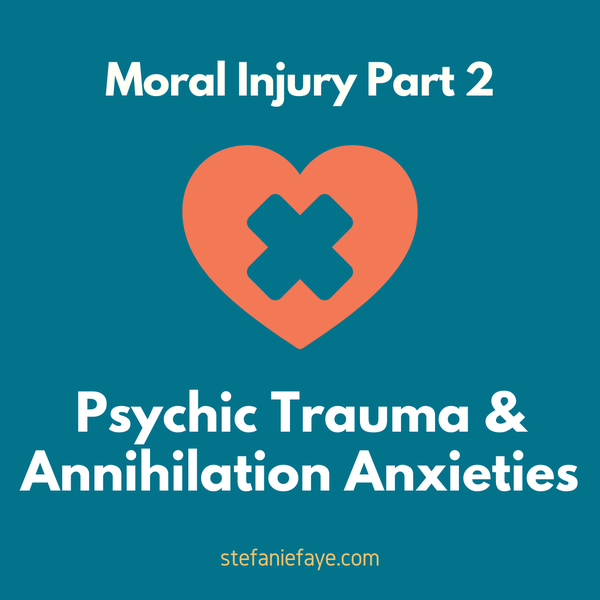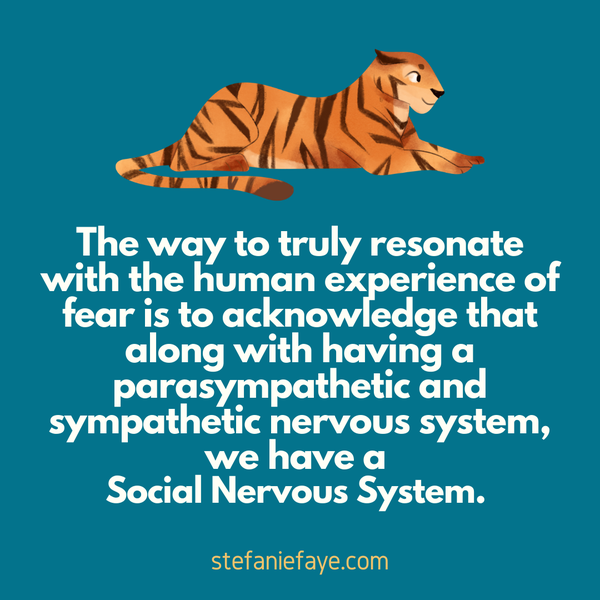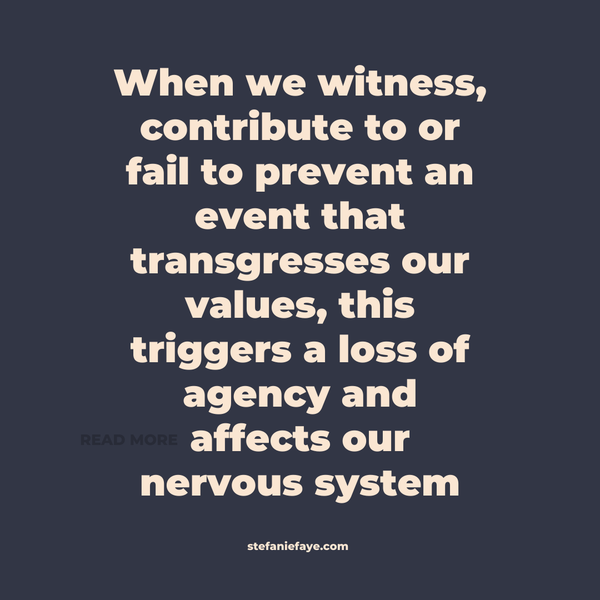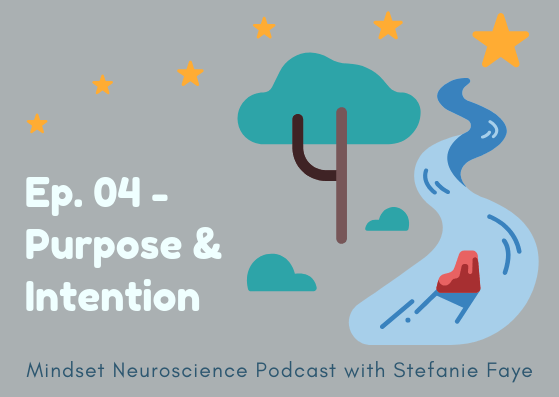Using the example of being ‘chased by a tiger’ to describe fear doesn’t resonate
Many of us hear about the concept of fear, and that we have primitive systems that make us believe we’re being ‘chased by a tiger’ even when we’re not. But there’s something missing from all this talk about fear that isn’t resonating with many people’s experience.
Through conversations with many clients over the past years, I have found that the unease they are feeling and what blocks them from getting to their next level is often tied more closely connected to concepts that are highly connected to sociality-based fears - fears and anxieties that connect with earlier (and current) experiences with attachment figures, family members and people who we are intricately connected with as well as people in our social structures.
These types of social-based anxieties are in many ways tied to concepts such as annihilation anxiety (Hurvich, 2003) and moral injury.
Annihilation anxieties are deep-seated fears that stem from very early environments and can get triggered by overstimulation from internal and external sources. This type of anxiety has been further elaborated by well-known psychoanalysts such as Donald Winnicott, who talked about anxieties forming due to "impingements" from the environment (APA 2025).
The types of fears that are related to Annihilation Anxiety, include:
- being overwhelmed, unable to cope and losing control
- merger, entrapment or being enmeshed or consumed by another
- disintegration of self or identity, emptiness, meaninglessness, nothingness
- impingement or violation
- abandonment and need for support
- survival, persecution, punishment and catastrophe
The way to truly resonate with the human experience of fear is to acknowledge that along with having a parasympathetic and sympathetic nervous system, we have a Social Nervous System.
When we are faced with challenges and dangers, the stress and anxiety we feel can often be tied to the meaning we make about the interactions and relationships we have with the people in our life (both past and present), including:
- how we are supported and valued
- how we might be intruded upon and controlled
- how we contribute and are needed
- how we might let others down and disappoint them.
As is described by Litz, Lebowitz, Gray and Nash in their book Adaptive Disclosure: A New Treatment for Military Trauma, Loss, and Moral Injury:
“Even when service members develop a life-threat-based stress injury in theater, arguably the most pressing problem is not high states of fear and arousal, but rather the self-condemnation and guilt that may arise from letting peers and leaders downbecause of a perceived or real temporary incapacitation in the field.”
By now, you’ve likely heard of trauma and post-traumatic stress (PTS). Many therapists and researchers such as Bill Nash and Ruth Lanius, have discovered as they work with PTS patients, however, that another element beyond fear was affecting them...
“They’ll see the stain on my soul”..
In an interview with TVO, Ruth Lanius describes one of her patients, a war veteran, having difficulty looking her in the eye. She asked if he could tell her about this, to which he replied ‘I cannot look anyone in the eye for fear that they will see the stain on my soul.’
This was one of the turning points for Lanius to begin looking at what is called Moral Injury. This path was inspired by the work of William Nash, who co-authored the book Adaptive Disclosure.
In the framework of Adaptive Disclosure, practitioners explore client's experience of something that is currently “haunting or consuming them”. This experience is categorized as a:
- life-threatening event
- traumatic loss or
- moral injury
Moral injury is further subdivided into:
- bearing witness to
- perpetrating or
- failing to prevent …
… events that transgress deeply held moral beliefs and expectations. Moral injury focuses on symptoms related to guilt, shame, anger, disgust and betrayal.
These frameworks expand beyond first responders’ experiences and into something that is embedded into the collective human narrative and subconscious:
In the realm of annihilation anxiety, when something distressing occurs and we feel that:
- we are to blame for it
- we didn’t do enough to stop something negative from happening
- we were betrayed, unsupported or abandoned
- we were responsible for someone else’s wellbeing beyond our capabilities
… these all contribute to a lingering experience of something being wrong. It’s a visceral sensation that there is some kind of pain we want to avoid at all costs.
Pause for a moment to think about how many individuals and communities in the world can relate to one or more of these experiences.
In my view, the idea of moral injury and annihilation anxiety is tied to anything that diminishes the integrity of not only the individual physical vehicle, but the integrity of social strands that connect us as cells of a planetary-wide-species-organism. Tribalism and intergenerational trauma are aspects of human society that contribute to this.
When you feel an overreaction or extreme sense of distress about something… see if you can explore what the story is behind this.
Is it tied to one of the anxieties listed in the top section of this post?
Just having an awareness of this can help create space for self-reflection and exploration of how we may release some of the deeper meaning our social nervous system stores within us.
In the next post, I’ll cover ideas being used to help us mitigate the negative impacts of psychic trauma, annihilation anxieties and moral injury.
In the meantime, I encourage you to look at the work of Ruth Lanius and William Nash and colleagues. Lanius is exploring MRI imaging, neurofeedback and therapies for noticing and processing emotions and bodily sensations, such as tension in the head and neck (often associated with moral injury).
Nash’s work on Adaptive Disclosure offers ideas of how we can process and release the pain of guilt, shame, self-condemnation, rage and other negative emotions associated with moral injury.
I cover this topic in a Podcast Episode on Moral Injury, Forgiveness and Cognitive Flexibility
A major point I want to highlight is how much our anxiety and stress might be tied to the ideas of being enmeshed/trespassed by someone, abandoned or not doing enough to prevent negative outcomes.
All of these are connected to our 'social strands'... what binds us in some way to those around us.
I continue to love this Sufi Teaching Poem, that illustrates our 'relational realities'...
"You think because you understand 'one' you must also understand 'two', because one and one make two. But you must also understand 'and'.”
― Mawlana Jalal-al-Din Rumi





